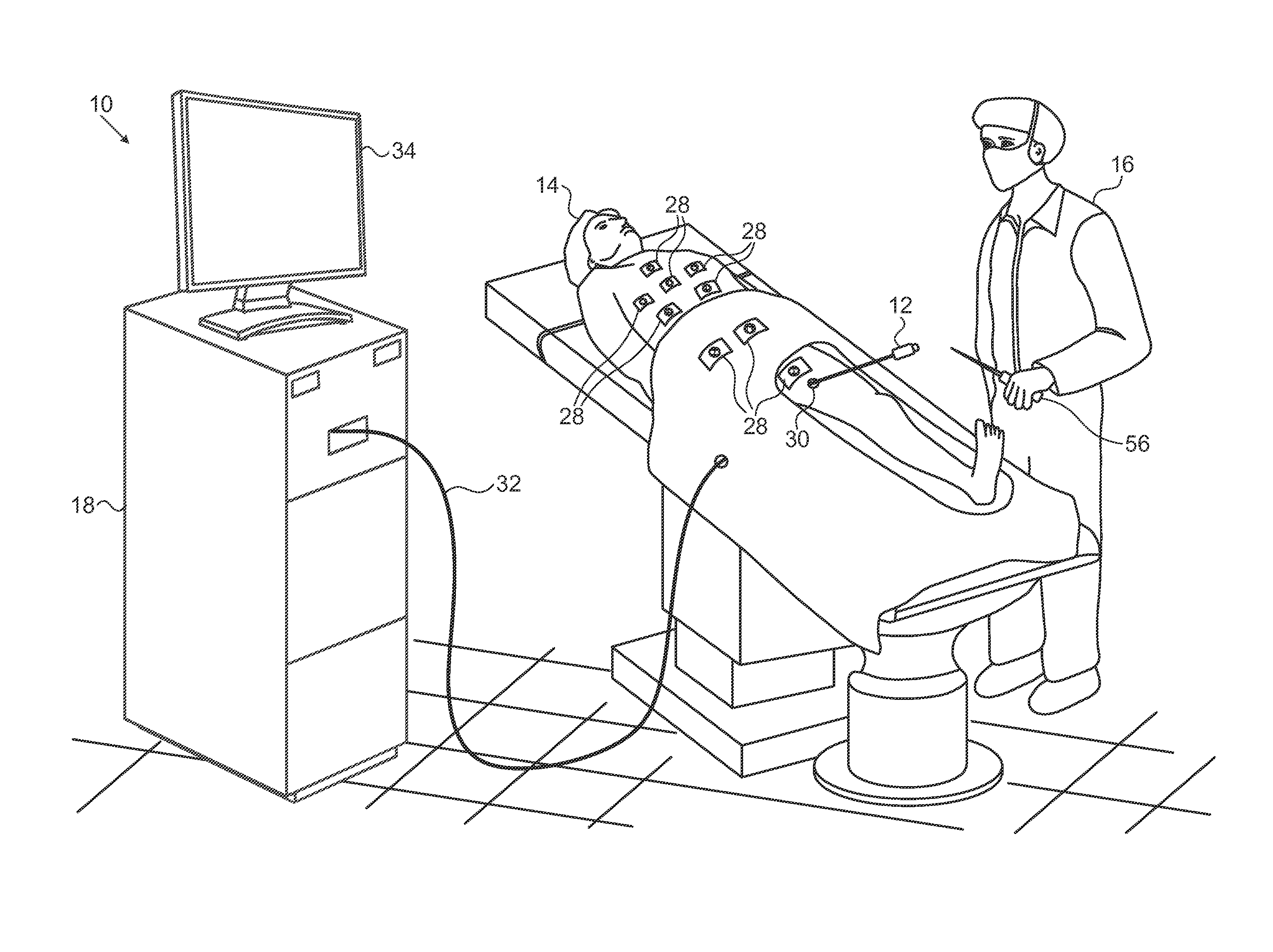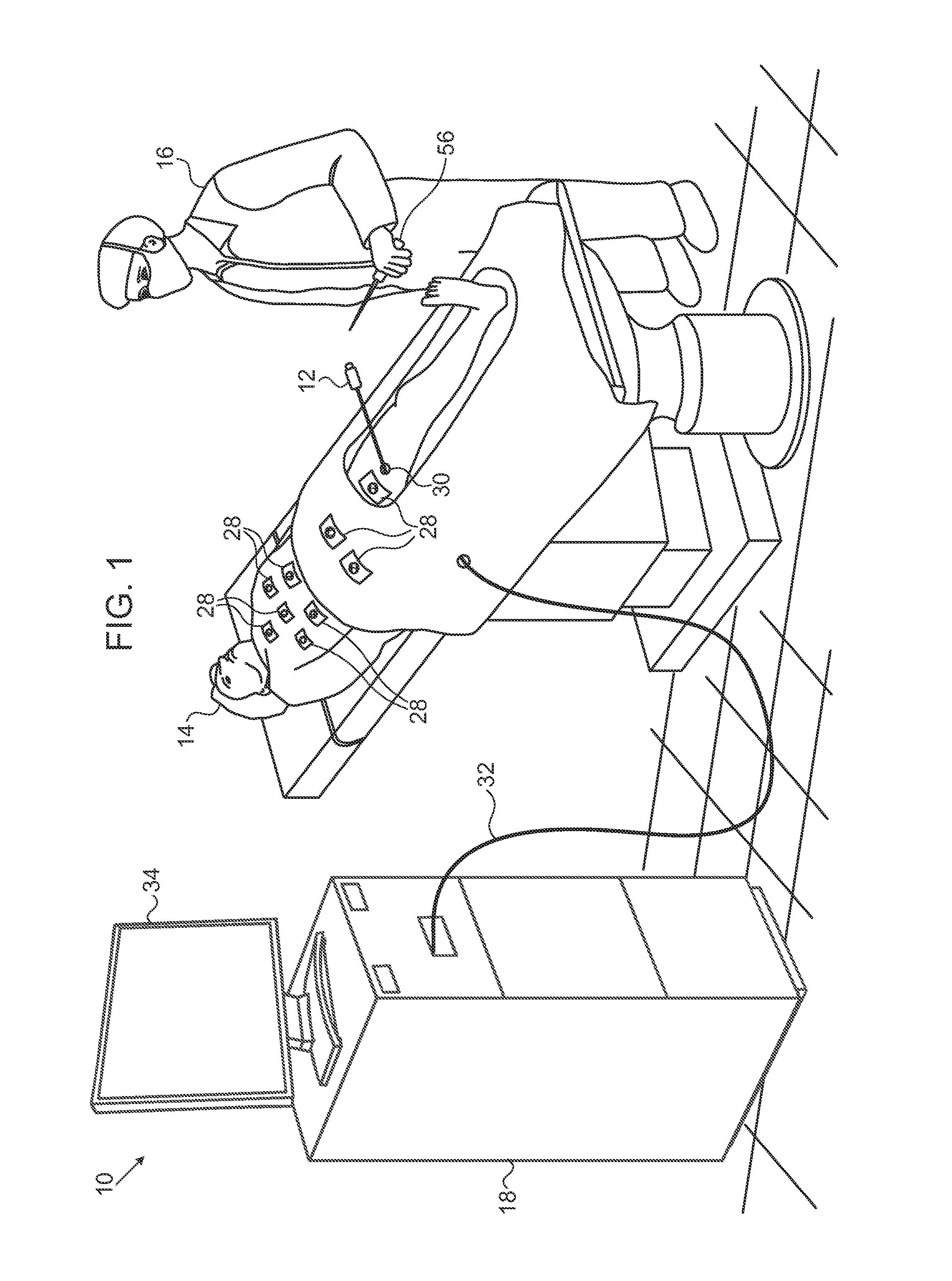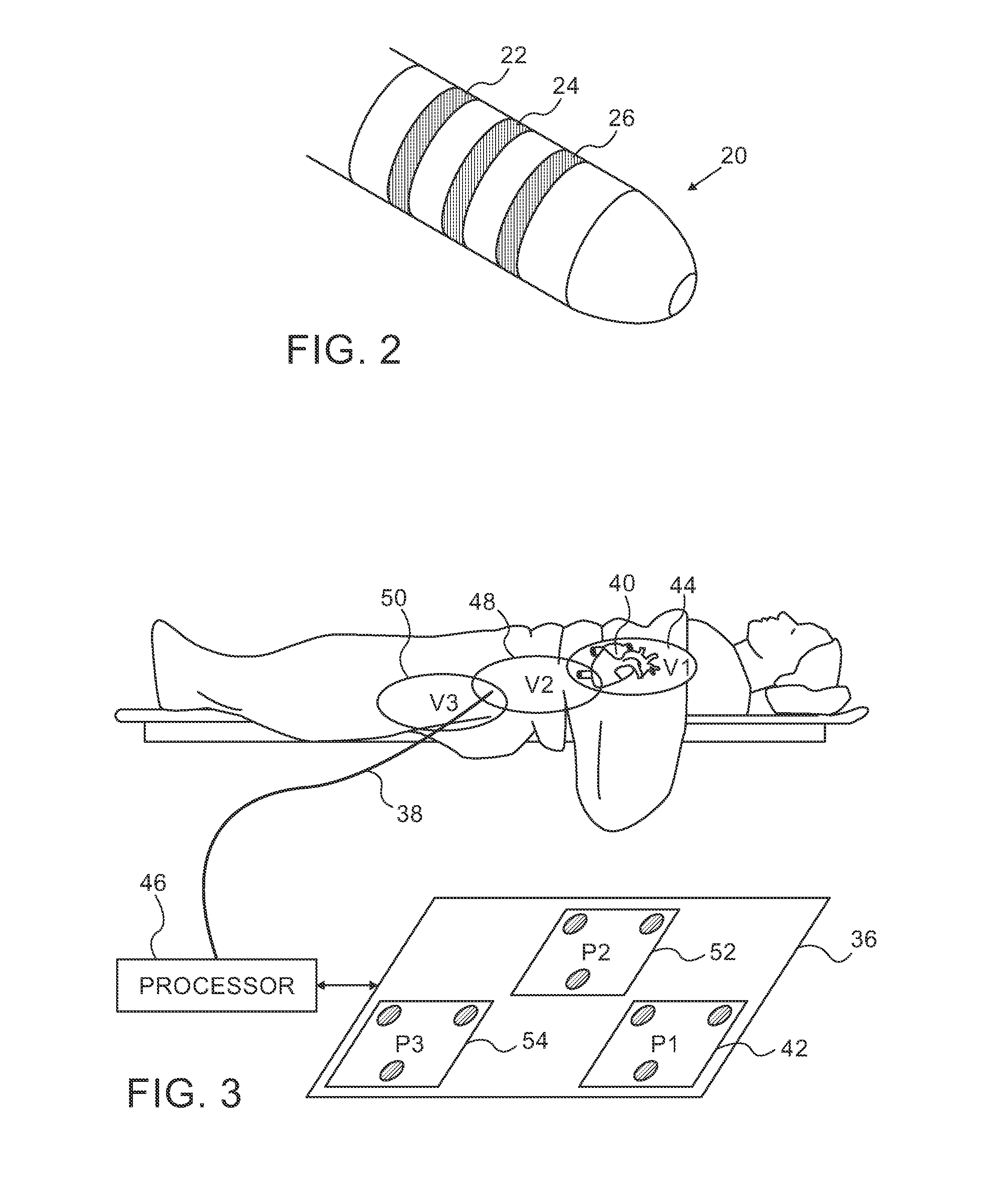Tracking of catheter from insertion point to heart using impedance measurements
- Summary
- Abstract
- Description
- Claims
- Application Information
AI Technical Summary
Benefits of technology
Problems solved by technology
Method used
Image
Examples
first alternate embodiment
[0049]Referring again to FIG. 1, in order to further improve the accuracy of the ACL subsystem, an external handheld probe 56 containing an electromagnetic sensor is connected to the control unit 18. The system 10 for example the CARTO system, has well-known electromagnetic position tracking capabilities (EM tracking) that are based on readings from the magnetic sensor when the magnetic sensor is subjected to a magnetic field.
[0050]Reference is now made to FIG. 4, which is a schematic illustration of a hand-held probe 58 that may be used in the system shown in FIG. 1, in accordance with an embodiment of the invention. The probe 58 has a handle 60 at its proximal end to be grasped by a user. Distal portion 62 contains a magnetic sensor 64, which can be the sensor described in the above-noted U.S. Pat. No. 8,456,182 or in commonly assigned U.S. Patent Application Publication No. 2009 / 0221907, which is herein incorporated by reference. The probe 58 may communicate with control unit 18 ...
second alternate embodiment
[0052]Reference is now made to FIG. 5, which is a schematic view of the distal segment of the catheter 12 (FIG. 1), in accordance with an alternate embodiment of the invention. Distal segment 68 now contains a magnetic sensor 70, which can be the sensor described in the above-noted U.S. Pat. No. 8,456,182.
[0053]The system 10 (FIG. 1), for example the CARTO system, has well-known electromagnetic position tracking capabilities (EM tracking) that are based on readings from the magnetic sensor 70. Accuracy of the enhanced ACL subsystem as described above is improved by correlating the impedance measurements taken from the multi-location pad 36 (FIG. 3) with additional location information provided by the magnetic sensor 70. The ACL subsystem may be calibrated or trained to conform to the position as computed from the data supplied by the magnetic sensor 70. The EM tracking system typically provides the catheter tip location and orientation with an accuracy of approximately 1 mm and 1 de...
third alternate embodiment
[0054]In this embodiment, the multi-location pad 36 shown in FIG. 3 is omitted. Instead, individual pads are placed on the body surface as shown in FIG. 1. The pads 28 are distributed relatively sparsely over the insertion region, where location measurements computed by the impedances are less exacting. The pads are relatively more numerous and densely arranged in the region of the heart, where accuracy is more important. For example, a pad density over the heart of between 2 and 3 times the pad density away from the heart is suitable.
PUM
 Login to View More
Login to View More Abstract
Description
Claims
Application Information
 Login to View More
Login to View More - R&D
- Intellectual Property
- Life Sciences
- Materials
- Tech Scout
- Unparalleled Data Quality
- Higher Quality Content
- 60% Fewer Hallucinations
Browse by: Latest US Patents, China's latest patents, Technical Efficacy Thesaurus, Application Domain, Technology Topic, Popular Technical Reports.
© 2025 PatSnap. All rights reserved.Legal|Privacy policy|Modern Slavery Act Transparency Statement|Sitemap|About US| Contact US: help@patsnap.com



